I’m sure this question has been on the minds of millions of Faye Wong (王菲) fans throughout the world for the last four years. Since her last No Faye, No Live! concert in Guangzhou on 10 January 2005, the release of the concert album in November 2004, and her To Love (將愛 Jiang Ai) album in November 2003, we have been waiting for a new album or concert performance.
Will 2009 be the year when Faye returns?
I’m not an insider like Katie Chen (陈家瑛 Chen Jiaying), Carina Lau (刘嘉玲 Liu Jia Ling), Vicki Zhao (赵薇 Zhao Wei), or Ma Jia (马葭) so I can’t answer this question with any kind of authority, but like most of you, I’ve been following her career very closely and have a number of thoughts on what may be keeping Faye from returning to her performing career.
(Photo source: 7_70)
There are a number of clues that might, together, provide an explanation:
Clue 1. Faye isn’t motivated by money. She never has been and probably never will. Thus, multimillion dollar offers may not have the appeal that it does for most people.
Clue 2. She’s not staying away because of the children, Tong Tong (竇靖童 Dou Jingtong) and Li Yan (李嫣), as many believe. Yes, she loves them and enjoys caring for them, but in the past, she resumed her career almost immediately after Tong Tong’s birth.
Clue 3. Since Coming Home in August 1992, every album has been different in the sense that, in each, Faye pushes the envelope, experimenting and trying new things. The point is that her discography since 1992 is a continuous progression, development, or growth. In her last album, Jiang Ai, Faye served as co-producer, with Zhang Ya Dong (張亞東), of the entire album. She also composed and wrote three of the songs, the title track “To Love,” “Leave Nothing” (不留), and “Sunshine Dearest” (陽寶), and she composed the music for “April Snow” (四月雪).
Clue 4. She’s not resting, as many seem to believe. Faye has tremendous energy and strength, and the reason for her absence from the limelight isn’t physical.
Clue 5. She’s not being restrained or held back by her husband, Li Yapeng (李亚鹏), as some believe. In fact, LYP is her biggest fan and would want nothing better than to see and hear Faye perform once again. However, to his credit, he’s leaving the decision solely in her hands.
Clue 6. Faye hasn’t lost her voice as some speculate. Her voice and talents are part of her DNA, and she can’t lose what’s a natural part of her. Also, her 18 May 2008 earthquake relief live performance with Faith Yang ( 杨乃文, Yang Nai Wen), Eason Chan (陈奕迅, Chen Yi Xun, ), and Aniu (阿牛) in “Wishing We Last Forever” demonstrated to the world that her voice is as beautiful as ever.
Clue 7. She hasn’t lost her looks. All one has to do is look at her recent photos and videos. She is absolutely gorgeous!
Clue 8. Faye isn’t restless, and this is a major reason, I think, for her reluctance to reignite her career. In the past, her creative juices flowed when she was restless or impatient. It’s almost as though she’s driven by an inner force that only she can feel — a force that can be released only through creative expression in music.
Clue 9. She hasn’t seen or heard anything in the current music scene to spark her creative energies. There’s no modern day equivalent of Teresa Teng (鄧麗君 Deng Lijun) or Cocteau Twins to inspire her. And her former collaborators, Zhang and Lin Xi (林夕), as well as C. Y. Kong, Dou Wei (竇唯), and Nic Tse (谢霆锋 Xie Tingfeng), haven’t been working with her to create new material.
Clue 10. Faye has never said that she’s retired or retiring from her career. And this is perhaps the most important clue. She’s leaving the door open simply because she may want to step into the recording studio when the spirit moves her. There’s no timetable. It’s just a matter of waiting for the right moment to strike, when her adrenaline and restlessness kicks in.
A Likely Scenario for Faye’s Return
So, given these clues, what’s a likely scenario for her return? My guess is that either or both Zhang and Lin Xi will have to make the first move by presenting Faye with new songs or concepts that could be exciting for her. It’ll have to be sufficiently different, new, and edgy, and it’ll have to be something that fits Faye and represents, for her, growth.
These two have collaborated extensively with Faye in the past, and, together, the whole is greater than the sum of its parts. I’d also toss C. Y. Kong, Dou Wei, and Nic into the mix. Faye brings out the genius in each of these guys, and, together, they could create the kind of music that would stir the restlessness or anxiety within Faye that seeks creative expression in music.
In this scenario, Faye would play many different roles, as she has in the past, when she felt in sync with her collaborators, and these roles will include bouncing off her partners and adding her own touches, including original compositions or lyrics or both.
These individuals, including Faye, intuitively realize that, alone, each can’t grow. It’s only in collaboration that they can transcend the limits of their own talents and create music that’ll take them and the entire industry to a whole new level.
So, how do we get this ball rolling? I’d say that someone has to take the initiative, the first step. And from where I’m sitting, the most likely candidate for this task is Katie. She has the personality, the power, and the talent to bring people together. She needs to make this happen by contacting the individuals and asking them to work with Faye to take up where she left off in 2005.
The goal would definitely not be to do an oldies-but-goodies rehash of past hits. Instead, it would be to continue the growth that stopped in 2005, to take the next step into a new and different sound that is purely Faye Wong.
Filed under: Uncategorized | Tagged: 1992, 2005, Aniu, april snow, arthquake relief, C. Y. Kong, Carina Lau, Chen Jiaying, Chen Yi Xun, Cocteau Twins, Coming Home, concert, 王菲, 竇靖童, 竇唯, Deng Lijun, Dou Jingtong, Dou Wei, Eason Chan, 鄧麗君, 阿牛, 陈奕迅, 陈家瑛, 陽寶, 马葭, 谢霆锋, 赵薇, Faith Yang, Faye, Faye Wong, Guangzhou, Jiang Ai, Katie, Katie Chen, Leave Nothing, li yan, Li Yapeng, Lin Xi, Liu Jia Ling, LYP, Ma Jia, Nic Tse, No Faye, No Live!, Sunshine Dearest, Teresa Teng, to love, Tong Tong, Vicki Zhao, wishing we last forever, Xie Tingfeng, Yang Nai Wen, Zhang Ya Dong, Zhao Wei, 刘嘉玲, 四月雪, 將愛, 張亞東, 李嫣, 李亚鹏, 杨乃文, 林夕, 不留 | 12 Comments »


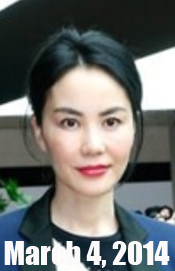








































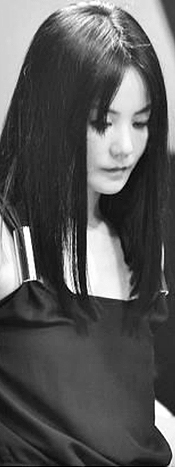









 Post a birthday greeting to Faye!
Post a birthday greeting to Faye!














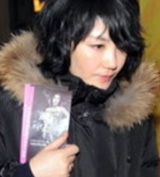





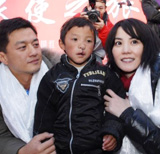


 Les Rues de Paris, 1994
Les Rues de Paris, 1994 4 'New' Songs from 1994
4 'New' Songs from 1994 1994 Duet with Emil Chau
1994 Duet with Emil Chau Hero OST
Hero OST



 Faye, Sandy Lam, & Shirley Kwan
Faye, Sandy Lam, & Shirley Kwan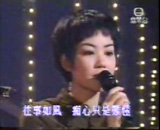


 Faye & Chilam, "Heart Sutra"
Faye & Chilam, "Heart Sutra"
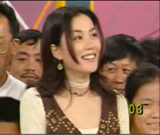












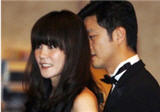
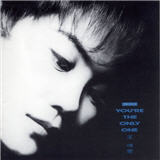
 Know Who You Are at Every Age
Know Who You Are at Every Age



 5.1.13
5.1.13 3.23.13
3.23.13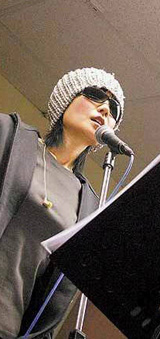

 Concert Information
Concert Information


